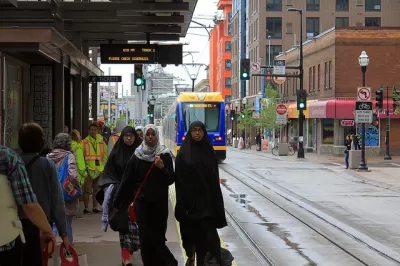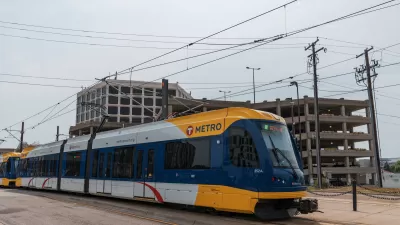The Prospect North Partnership intends to build a fully integrated, resource-efficient neighborhood in a prime yet underdeveloped location.

Brian Martucci calls it "the most cohesive, comprehensive and outside-the-box neighborhood development vision to be attempted anywhere in MSP in a generation." Dubbed the University Avenue Innovation District (alternately, the Prospect North Innovation District), the plan seeks to build on the advantageous features already in place in the area just southeast of the University of Minnesota: a convenient, multi-modal location with plenty of underdeveloped properties.
According to the Prospect North Partnership website, "The goal is to create a new, holistic way to develop and implement ongoing management of the centrally located but underused area at the intersection of Minneapolis and St. Paul."
With ULI MN serving as manager and advisor to the public-private partnership, the plan incrementally builds a fully integrated live-work community with district-wide management of infrastructure and resources. The plan focuses heavily on connectedness, resource efficiencies, and a set of guidelines for Healthy Living, including access to healthy food vendors, tobacco-free zones, and natural systems for cleaning stormwater.
"Over time, the vibrant culture of innovation will attract business incubators, existing employers and deep-pocketed startup investors, creating the sort of virtuous cycle that’s currently on display in the North Loop and parts of Northeast Minneapolis," Martucci writes.
FULL STORY: An urbanist's dream: New MSP innovation district would create national standard for city building

Trump Administration Could Effectively End Housing Voucher Program
Federal officials are eyeing major cuts to the Section 8 program that helps millions of low-income households pay rent.

Planetizen Federal Action Tracker
A weekly monitor of how Trump’s orders and actions are impacting planners and planning in America.

The 120 Year Old Tiny Home Villages That Sheltered San Francisco’s Earthquake Refugees
More than a century ago, San Francisco mobilized to house thousands of residents displaced by the 1906 earthquake. Could their strategy offer a model for the present?

HSR Reaches Key Settlement in Northern California City
The state’s high-speed rail authority reached an agreement with Millbrae, a key city on the train’s proposed route to San Francisco.

Washington State Legislature Passes Parking Reform Bill
A bill that would limit parking requirements for new developments is headed to the governor’s desk.

Missouri Law Would Ban Protections for Housing Voucher Users
A state law seeks to overturn source-of-income discrimination bans passed by several Missouri cities.
Urban Design for Planners 1: Software Tools
This six-course series explores essential urban design concepts using open source software and equips planners with the tools they need to participate fully in the urban design process.
Planning for Universal Design
Learn the tools for implementing Universal Design in planning regulations.
Ada County Highway District
Clanton & Associates, Inc.
Jessamine County Fiscal Court
Institute for Housing and Urban Development Studies (IHS)
City of Grandview
Harvard GSD Executive Education
Toledo-Lucas County Plan Commissions
Salt Lake City
NYU Wagner Graduate School of Public Service





























